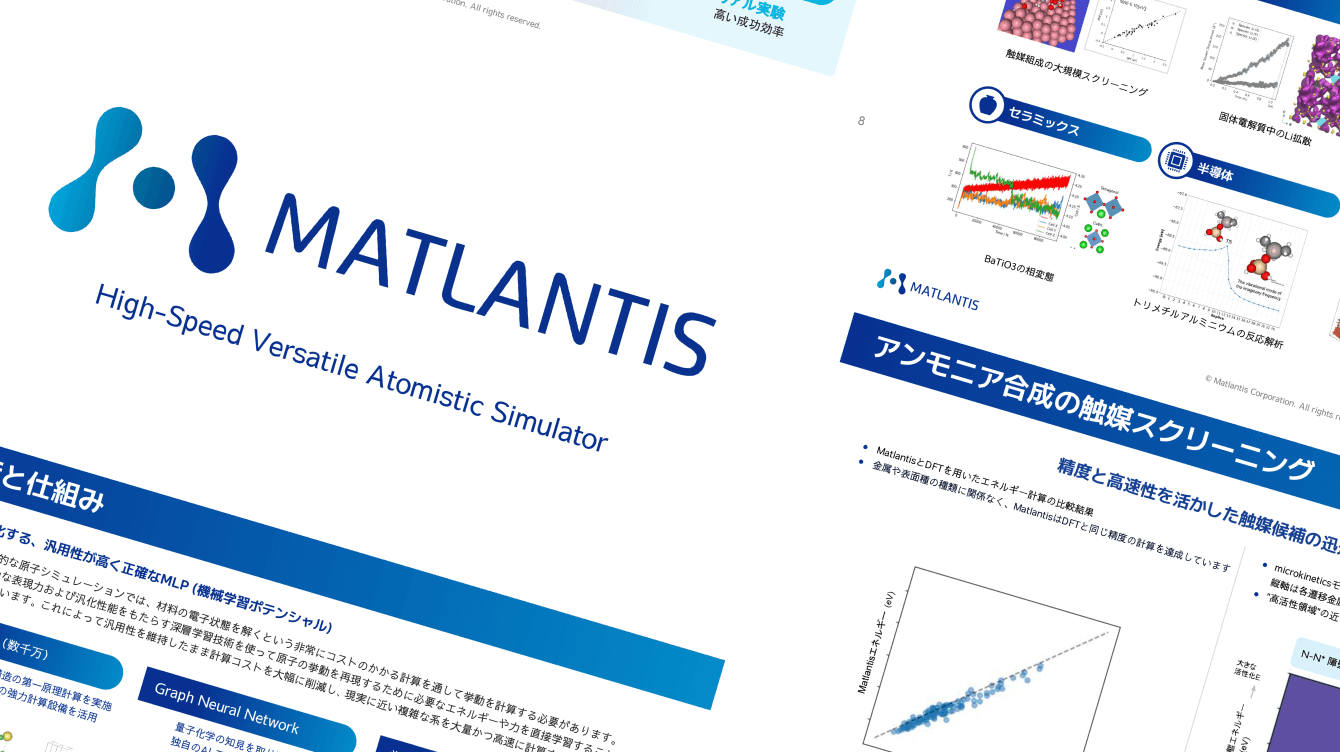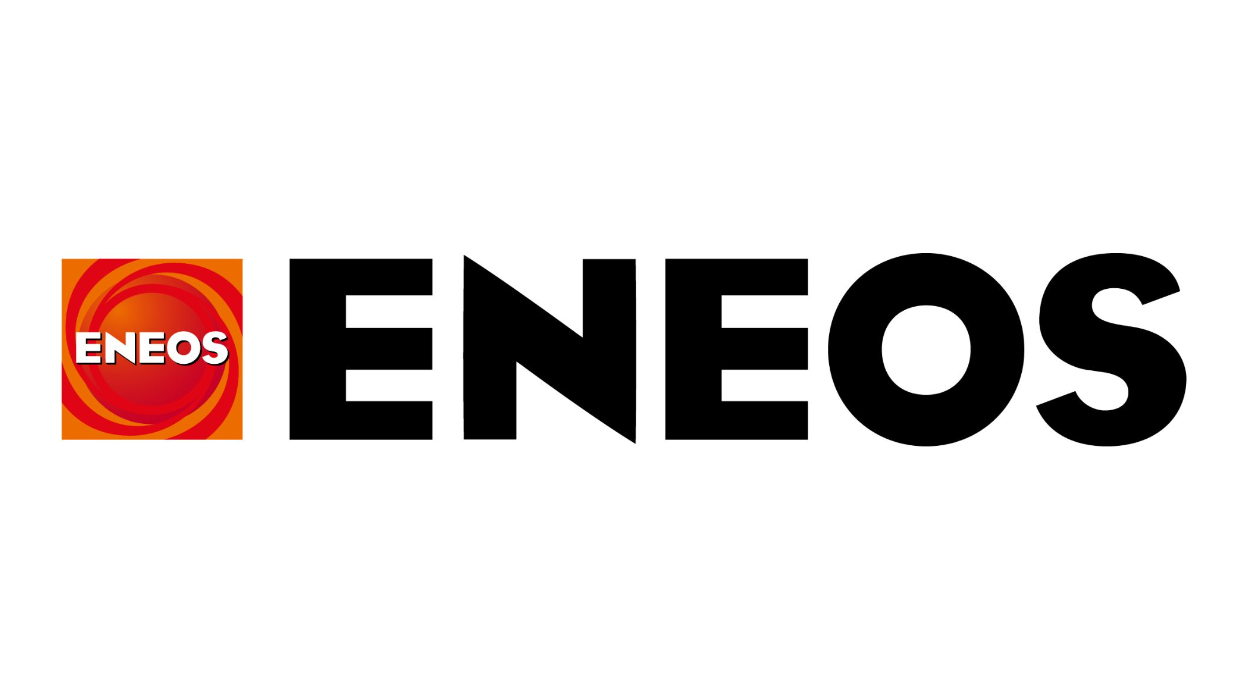Navigate Atomic Structures
to Discover New Materials
What is Matlantis?
An atomic-level AI simulator that delivers fast, accurate insights to guide experimental discovery
The fusion of materials science and AI enables atomistic simulations that are both highly accurate and fast. Matlantis simulates even the most chemically and structurally complex materials, without restriction on elemental composition or arrangement. As an atomic-level materials design tool that operates ahead of experiments, Matlantis is transforming the way materials research is done.
From months to seconds. This is not just about speeding things up, it's about a paradigm shift in research and development.
Why choose Matlantis?
Matlantis is a step towards changing material development
Specific effects of implementing Matlantis based on your role
Why Matlantis
What supports Matlantis technology and reliability
Our Strength
The Knowledge Hub
Explore expert insights, case studies, and blogs on the power of Matlantis
Learn from new events and seminars
Search by category
Recommended downloads
Matlantis
Portable Guide
Everything You Need to Know — Features, Benefits, and More

- Support
We will provide you with support information to ensure you can use our service with confidence.


News
-
2025.11.26Events & SeminarsNEW
-
2025.11.25Events & SeminarsNEW
Announcement of presentations and exhibits at the 2025 MRS Fall Meeting & Exhibit
-
2025.11.21press releaseNEW
Materials Scientists Embrace AI to Accelerate Discovery—Yet Nearly All Confront Compute Limitations
-
2025.11.12Events & SeminarsNEW
[Webinar] Matlantis: Universal Atomistic Simulation for AI-Driven Materials Discovery
-
2025.10.31Events & SeminarsNEW
Announcement of presentations and exhibits at the 2025 AIChE Annual Meeting























